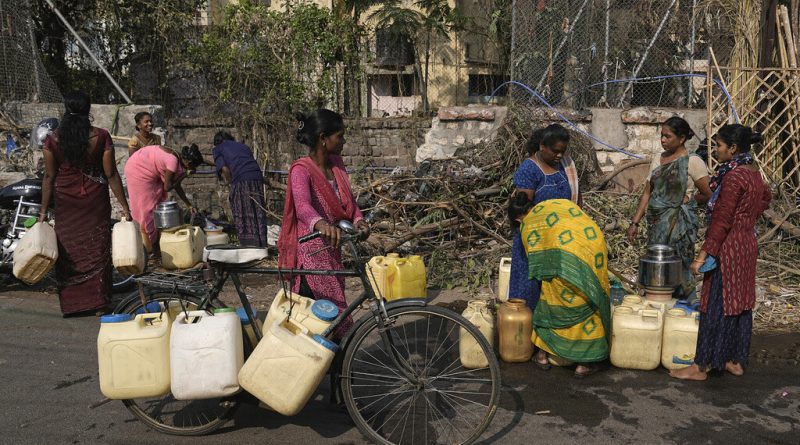FOR SOME, WATER IS ALREADY SCARS, AND IT WILL ONLY GET WORSE WITH CLIMATE CHANGE. WHAT CAN WE DO ABOUT IT ?
By- Dana Beltaji
(An editor for AP’s Climate and Environment team)
It’s hard to overstate just how important water is. “Water is life,” as one resident of a drought-prone town in Kenya put it to Associated Press’ Africa climate reporter Carlos Mureithi.
But with human-caused climate change upsetting the water cycle, it means that while some parts of the world are now facing more frequent deluge, others are going longer and longer spells without rain at all. Lakes and rivers are drying up in some regions while appearing in others. Groundwater that took many years to accumulate is being extracted so fast it can’t replenish quickly enough.
This month, the AP reported on how India’s Bengaluru, through a mixture of climate change, the naturally occurring El Niño weather phenomenon and poor water management, is suffering a water crisis. Lakes around the city have dried up, groundwater levels aren’t recovering, and residents are relying on expensive water rations from nearby villages that come in tankers.
Experts say they could have seen this coming, as the city balloons in population as tech companies from around the world set up operations there, but new water sources don’t really form part of the city planning.
And it’s not just southern India. Reporters from across the globe highlighted for World Water Day last Friday just how dire the situation is for many in disparate parts of the world.
In Morocco, water sources are getting so salty because of the lack of fresh water and sea level rise that it’s killing livestock and hurting farmers. In Peru, the government sends trucks filled with water to those in the country’s poorest neighborhoods, where tensions arise as people try to get what they need. And in Indonesia, tap water is so inconsistent and dirty that residents rely on buying tons of bottled water brought in from elsewhere, choking waterways with plastic waste in the process.

There are solutions to these water crises. Of course, limiting warming by cutting down the amount of fossil fuels the world burns will help keep weather abnormalities and sea level rise from getting worse. But for more immediate and local improvements, there’s also water management.
In Kenya, some of the driest counties in the country are making the most of their wet seasons by using sand dams to capture rainwater that they can pump out when it’s needed. Keeping it in the sand means it doesn’t evaporate as much in the hot sun and it helps replenish groundwater. The region is also building rock catchment systems, where natural rock surfaces help capture and filter rainwater for residents to store and use during droughts.
Back in Bengaluru, experts are discussing how to best preserve the nearby lakes by limiting development near them. They also know the importance of preserving natural surfaces that let rain trickle down to recharge groundwater, rather than paving the entire city in concrete that speeds runoff.
Although solving the climate change problem and water management crises can work in time, for those on the sharp end, it may be too little, too late.
As one water-starved couple in California put it to reporter Dorany Pineda, their everyday struggle to get water since drought and overpumping dried up their well leave them “just emotionally drained.”

